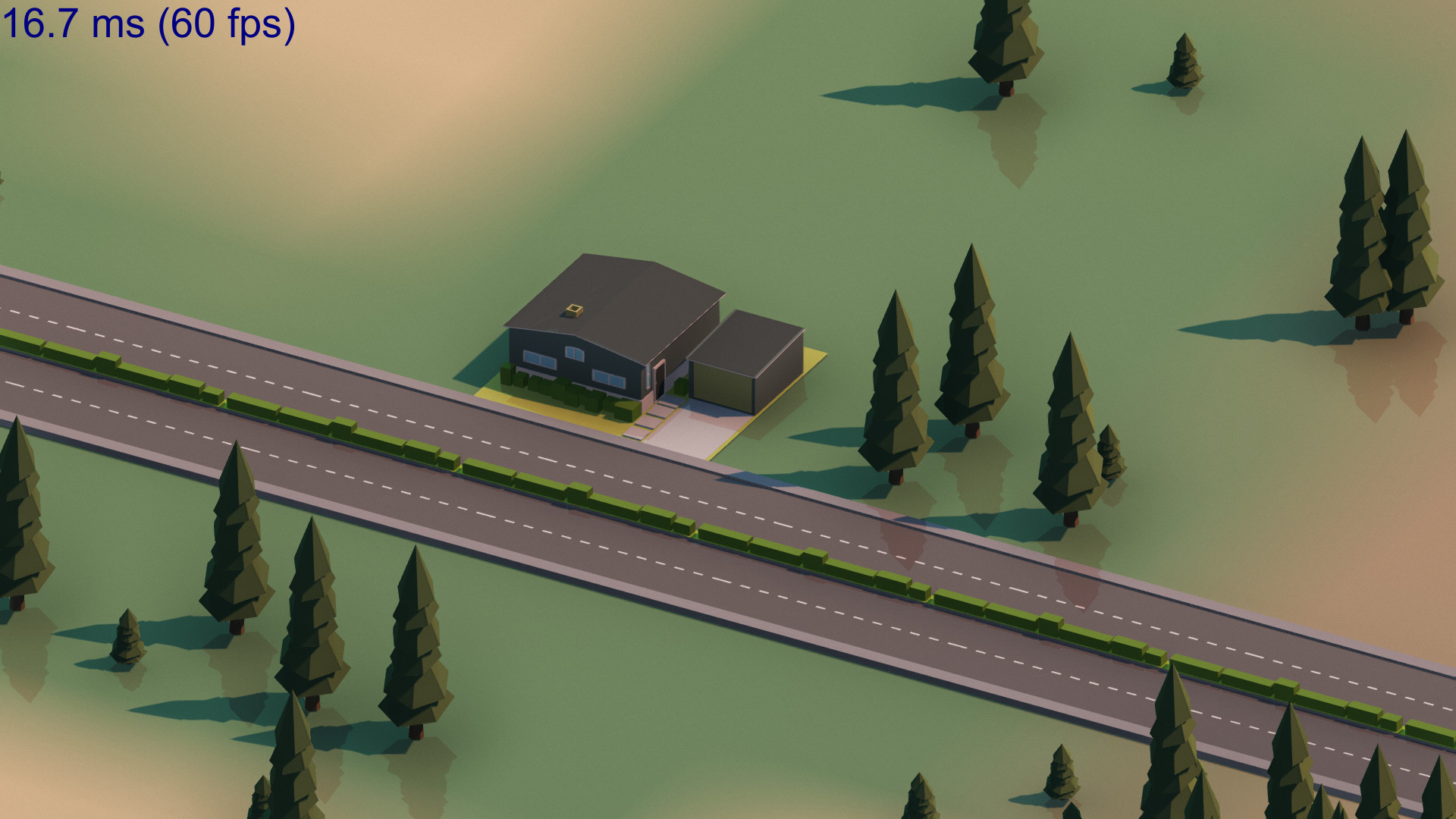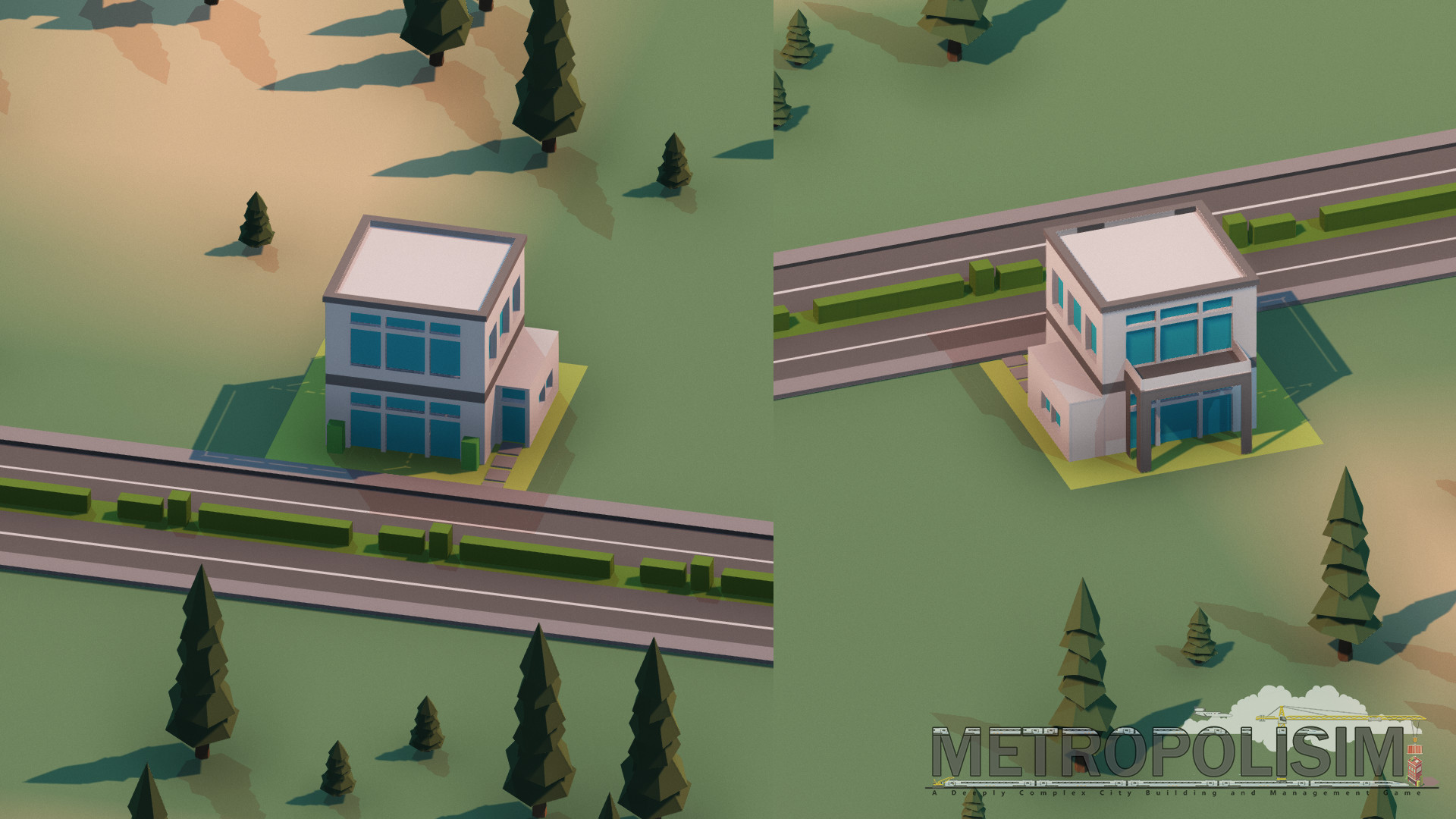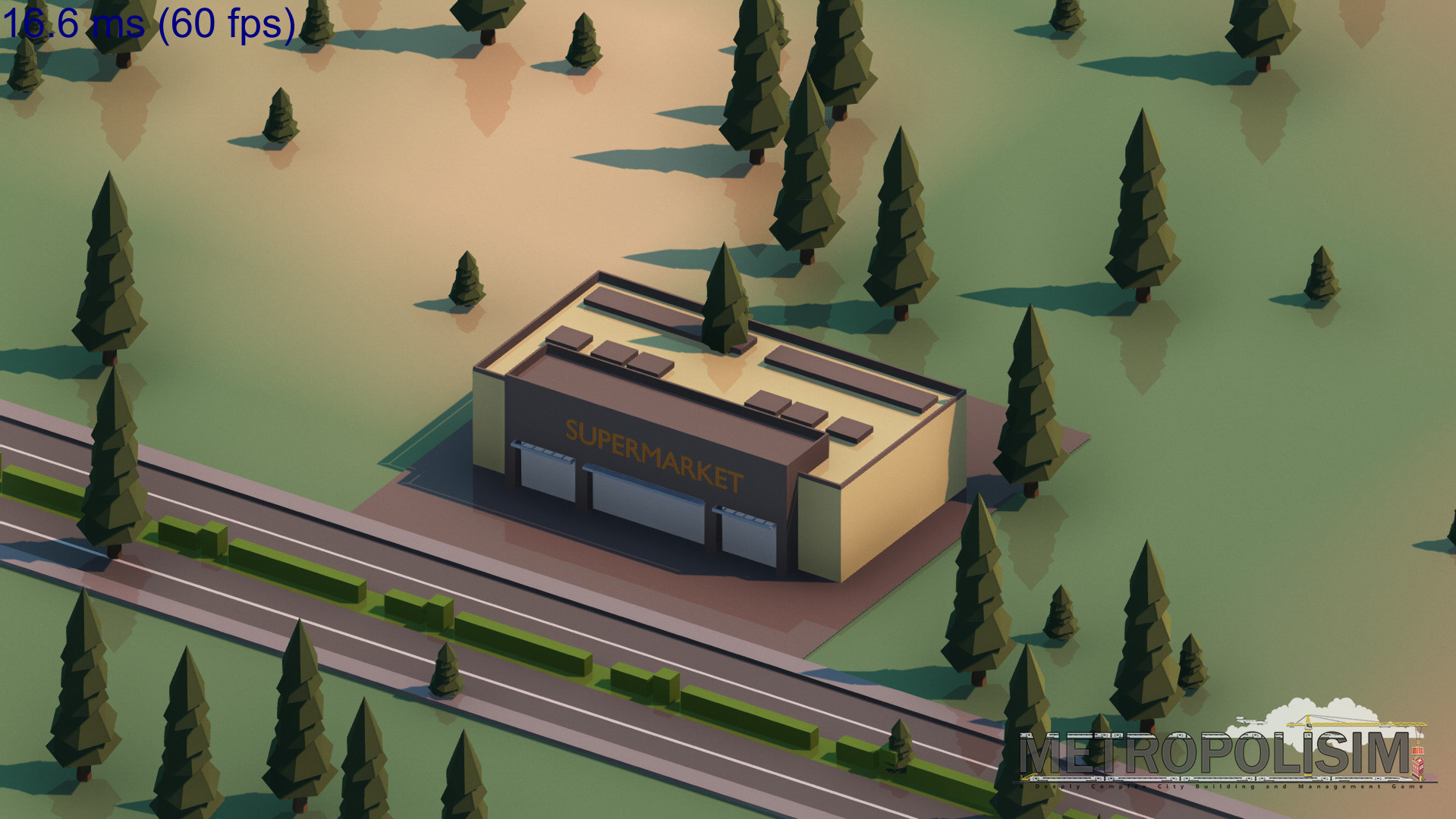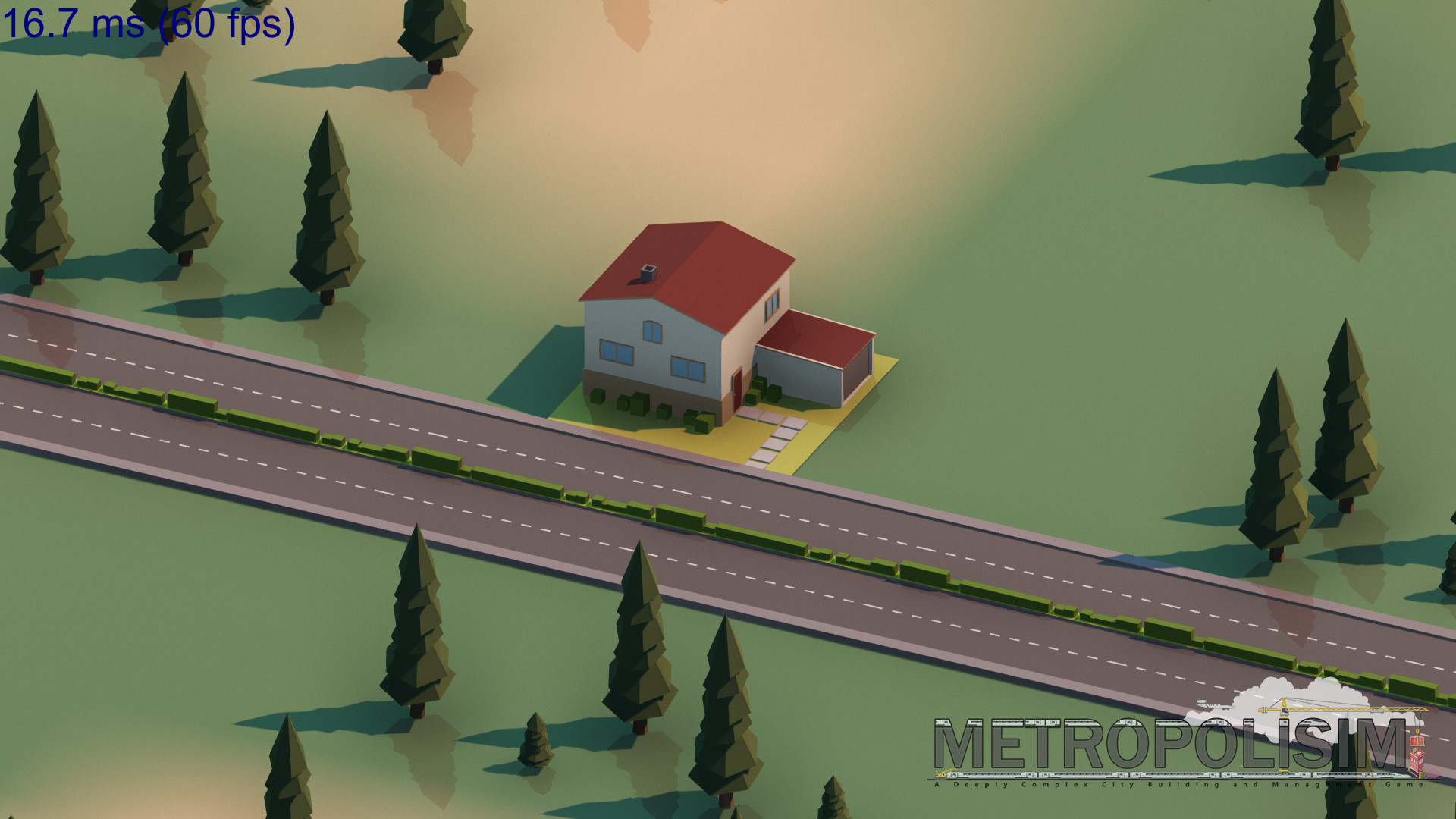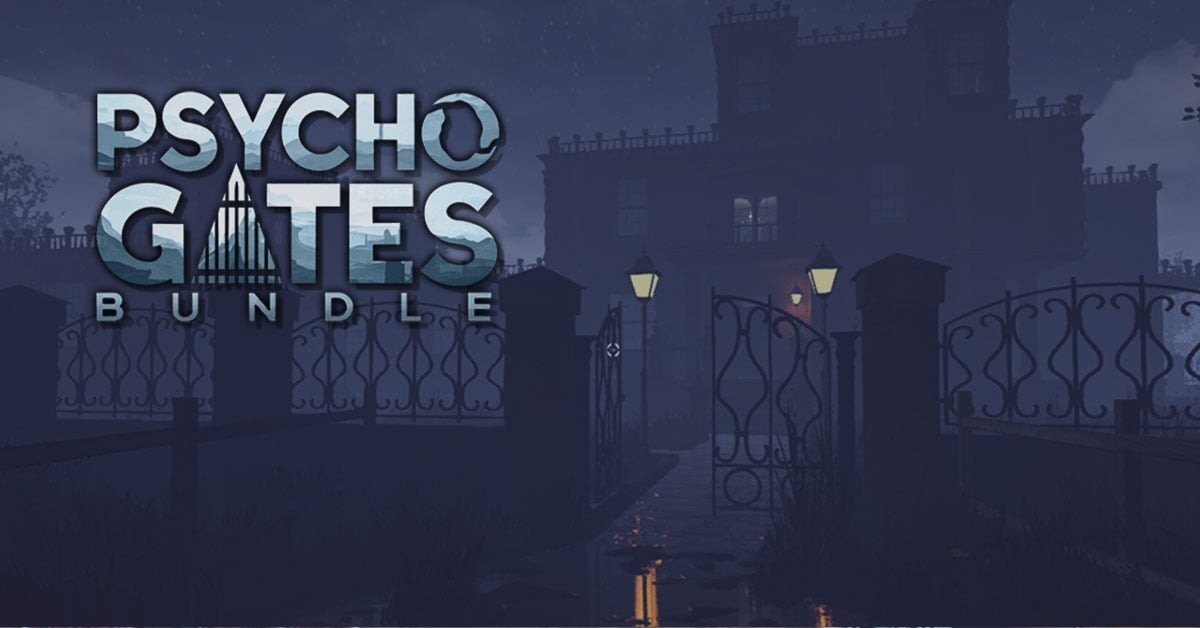
The most authentic city-building simulation experience to-date. Build, grow, and manage a town of zero into a world-class city with up to a 10,000,000 population. Take on the development and ongoing administrative tasks necessary to keep a modern-day metropolis running and flourishing. You'll need to be city-planner, engineer, and mayor if you hope to be successful.
The Definitive City Building Experience
LEVEL OF DETAIL - Build cities up to 10,000,000 population where every citizen is a fully simulated character. Watch them go about their lives as they travel to work, get stuck in traffic, take the bus, enjoy leisure activities, and more.
ZONING - Designate areas within the city for residential, commercial, high-technology, and industrial growth. Then watch as construction begins and buildings rise from the ground.
BUILDING - Construct city buildings to deliver essential services to your residents. Ensure you have the appropriate coverage to meet their needs if you want your city to continue to grow.
MANAGING - Oversee the budget of your city. Balance tax revenue against expenses like essential services, maintenance, and cultural attractions to keep the treasury full.
TRANSIT & TRAFFIC -Build streets, avenues, highways, and mass transit to make it easy to get around.
A Nod to Classic City Sims and Builders, Re-Imagined for Modern Day
Construction, zoning, traffic, public transportation, managing your budget, population management, hiring & firing city employees, providing essential services, placing and servicing cultural landmarks. All simulated in tremendous detail. I've taken the best parts of past city builders and improved on them to make this the best one yet.
Future Updates, DLC Policy, and Mod support
As someone who has been playing city builders for over 20+ years this game is a passion project that I've wanted to work on for a long time. My mission is to make a better, more challenging city builder. I want the player to lose track of time in this game and get engrossed in the experience. My commitment is to not stop once the game is shipped. There will continue to be updates including new features, new buildings, and more for many years after the game is released. I will continue to add features to the game for free after the game is released. You will be able to add new content including buildings, through robust mod support.

[i]Note: This development diary covers functionality present in the pre-alpha version of the game. All information provided is subject to change as development continues.
[/i]
Welcome to development diary #5 for Metropolisim - The Deeply Complex City Building and Management game.
Today I want to talk about the education system. Providing access to quality educational opportunities is one of the fundamental aspects of taking care of the citizens of your city. As you will read below, educating the citizens of your city is critical to advancing your city from a small town to a large metropolis. Neglecting education is a certain way to doom your citizens to eternal misery. And maybe that's your thing?
Education System Overview
Every citizen in the game has an education rating that starts at 0 and goes up to 100. Within this range are education levels like "low", "medium", and "high". I promise I'll come up with better descriptions.Education levels directly tie to the type of school that will be required to educate a citizen. For example, citizens with education ratings less than 40 will be required to attend elementary school. Once they reach level 40 they can move on to High School. At level 75 they will be eligible to attend College or a Professional School. One thing to note is that this is not dependent on age. All citizens regardless of age will need to progress through these education ratings.
Higher education ratings are required to take on more skilled jobs such as those in medium to high wealth offices and high-tech industrial zones. Additionally, having an educated population will increase the chance of certain events occurring in-game as well as will increase the likelihood of attracting advanced research organizations and cutting-edge technology opportunities. More to come on this in a future dev-diary. But just know that if you do not educate your citizens you will not be able to progress into a world-class city.
In the early stages of a game, before your city has earned much prestige or renown, most of the citizens who move into your city will have low education ratings. As your city progresses and becomes a large metropolis it will begin to attract new residents looking for high-tech or high-skill/education careers. These citizens will usually move in to your city with higher education ratings.
Education - How it Works
The first step to educating your citizens is to construct buildings, such as schools, in the game world. Students from the surrounding communities will then be able to enroll in the school. Due to schools having a maximum student capacity as well as a maximum range in which students can live in order to enroll in that school you'll want to think carefully before placing a school. When you choose a site for a school the game will give you some basic information about the area, such as how many students live nearby.Schools require students to enroll into them and each school has a finite capacity to educate citizens. For example, if you place an elementary school with a capacity of 450 and there are 1,000 students in the surrounding area with an education rating of 40 or less only 450 of those 1,000 eligible students will be able to enroll in that school at any time. As the enrolled students receive education over time they will eventually cap out at a 40 education rating and need to move on to receive the next step in their education at a High School. This will free up capacity at the elementary school for a new student to enroll.
There are two ways to get around this capacity problem. The first, of course, would be to build another elementary school nearby. Of course, this could be cost prohibitive depending on how much room you have in the budget. The second option would be to invest in 'upgrading' your first elementary school. There are numerous upgrade paths for every city building. Some of the things you could do to increase school capacity would be to hire additional teachers, increase funding to the school, or build temporary structures to house additional students. Likewise, if there are too few students for the school you'll want to reduce funding and teacher counts to ensure you aren't over spending. Just like other systems in the game it will be a constant balancing act.
Schools have an initial cost to build and then an ongoing monthly maintenance cost to keep running. This includes cost for things like teacher and bus driver salaries, supplies, utilities, and other building costs such as building maintenance. One thing to note is that buildings cost more as they age. Older buildings require more maintenance. It makes for an interesting game mechanic when you have to balance the cost of maintaining an aging building vs. the one-time cost to construct a new school. Eventually it will make financial sense to simply demolish a school and construct a new one. But more to come on that in a future dev-diary.
Other Educational Opportunities
Some of the other buildings that provide education include:Libraries
Museums
More (Surprise)

Both libraries and museums are also cultural attractions which provide land-value boosts to their surrounding tiles. Also interesting to note is that libraries and museums do not require enrollment. That is, every potential citizen that is not max-level education in the surrounding area will potentially get a monthly increase to their education rating based on living near a library or museum.
Charting a Direction
Education is one of the ways you will be able to control the direction and growth of your city. As mentioned above it will be a constant balancing act. One thing to ensure is that you are working towards achieving the optimal balance of education rating distributions among your city's population.As your city grows the composition of available jobs will constantly be evolving between low skill (elementary education), medium skill (HS education), and high skill (Post-Secondary education) and you will want to ensure you aren't over or under educating. For example, if every citizen is education rating 100 and you only have enough high-skill jobs for 20% of those citizens, the other 80% are going to become unhappy due to not being able to find a job that matches their education. This, over time, will lower citizen happiness and your mayor rating and potentially force citizens to abandon their homes and leave for another opportunity in another city. Conversely, if you don't educate anyone, you will never have enough skilled workers to fill high-skill jobs in high-tech industry and commercial office zones and those businesses will not stay in your city.
One way to manage this is to target the communities where you build schools and provide education. Every area of the city may not need the same education investment. Certainly, higher wealth levels will demand education for their building occupants.
Conclusion
As you can see there is a lot to think about when planning your education and school network within your cities. And this is only the tip of the iceberg. I've not covered any of the more advanced elements related to education's impact on the rest of your city planning or any of the more advanced opportunities you'll have to dive deep into each school's individual configuration or the decisions you'll be able to make at the city level that will impact all schools and students in your city. I will leave this for you to see when the game enters Early Access.Thanks for reading. Hopefully you enjoyed this update. I'd love to hear your thoughts and questions either in the comments or on the forums.
Roy
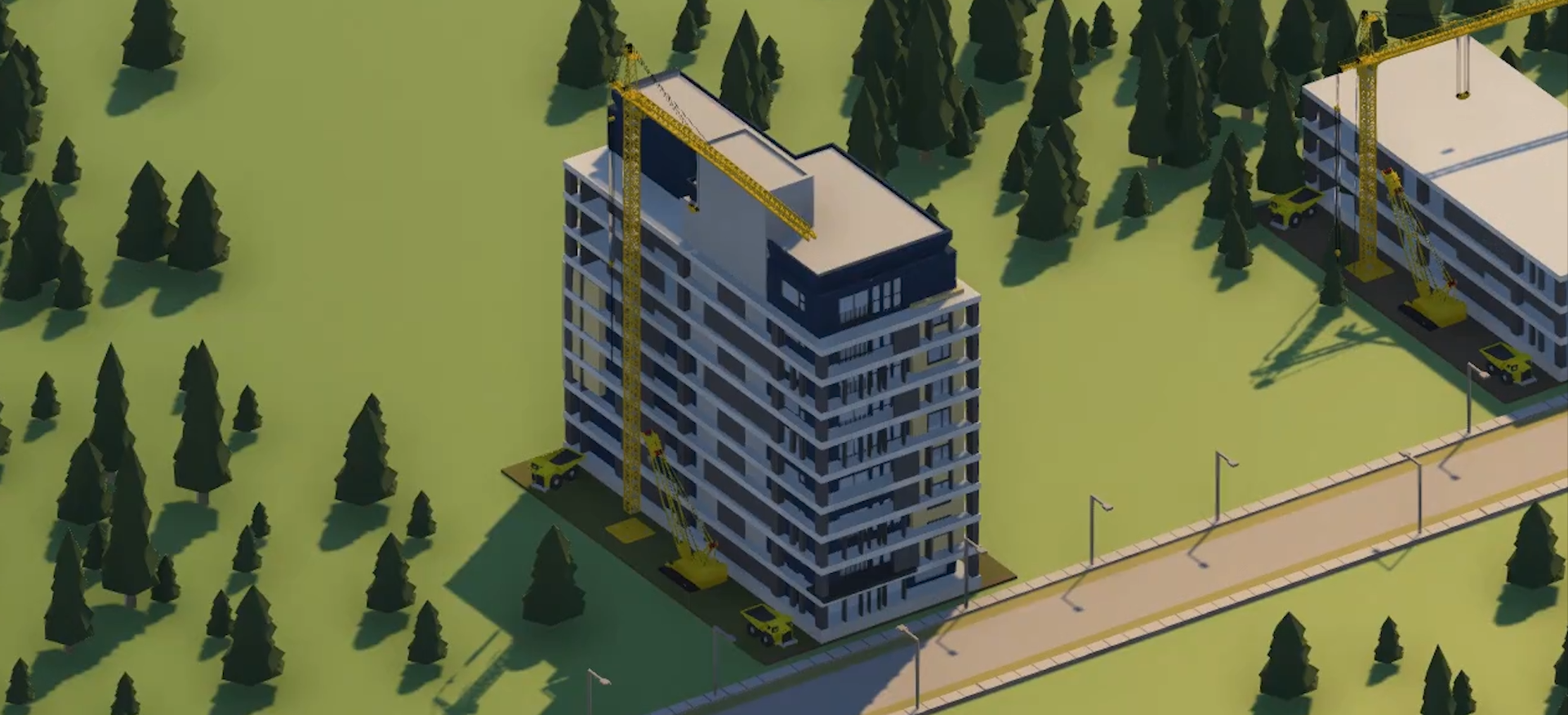
Welcome
Hello everyone. Welcome to the 4th Development Diary for Metropolisim: The Deeply Complex City Building and Management game.Before I start off I want to address what unfortunately seems to be a common concern about the game that keeps popping up. There have been a lot of questions about whether development is still underway, has the game been cancelled, abandoned, etc. I assure you this is not the case. I have a timeline for how I want to release information and I am following it to the best of my ability. Solo developing a game of this scale is hard work. Please don't read too much into it if there are no updates for significant periods of time. I will still be working on the game behind the scenes and will share as much information as possible when the time is right.
I would ask that those of you who enjoy participating in the community please try to stay positive and not dwell on the fact that there hasn't been an update in whatever timeline you think one should be released.
My motivation for making Metropolisim is to make an outstanding, fun, and challenging city builder. I am doing it for myself more than anyone. I'm making the game I want to play. It's not about a quick cash crab otherwise I would have released the game already. I want the game to be of the highest quality possible, and therefore, it will take time.
Now, let's jump right into the information I have for you today.
This development update is going to familiarize you with some of the most important features of the game which will bring your city to life and make it unique - zoning and building! I say "some of" the features, because there is a lot I want to leave for surprises for you as players the first time you start the game, so I won't be giving away everything just yet.
Before we start let's familiarize ourselves with some terminology I'll be using throughout.
Zoning - The process of designating plots of land within the city for development by citizens (residential), businesses (commercial, industrial, etc.) or state/government use. The player's responsibility is to determine what type of zones they want to lay out to grow their city, but once they zone, it is up to the citizens of the city to occupy and decide what gets built on that land.
Building - Unlike zoning, constructing building allows the player to place buildings directly on plots of land within the city. This is the main way the player will deliver essential services to the city such as crime prevention through the construction of police stations, health services by constructing hospitals and clinics, etc. There are also other entities who will want you to build things for them within your city. More on that in a little while. I will refer to this as "placing" buildings in the rest of this article.
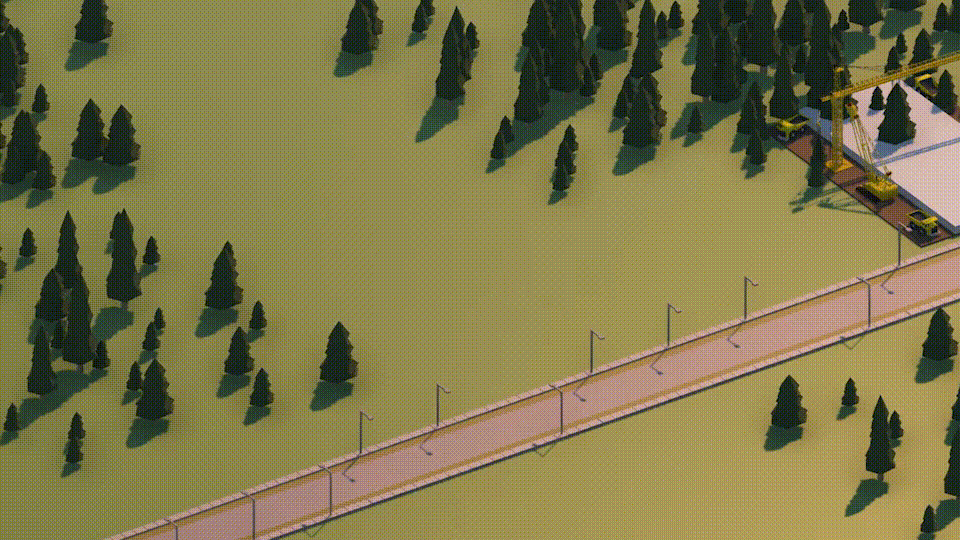
Zone Types
Zoning is split into a number of categories based on the type of buildings you want to grow in certain areas of your city. It is important to understand the land you are building on to make the most educated decision about what type of zoning you use in each area. Each parcel of land will have a land value for each zone type. For example, one parcel may me more valuable to commercial retail zones than it is to residential based on the amount of traffic passing by that parcel of land. For commercial retail the land will be valuable due to the number of customers, and oppositely, for residential, it will be less valuable due to high traffic noise. As you can see it will be important to evaluate land and properly plan before laying out your zones.Land value will be affected by a number of factors and again each zone type will have it's own land value for each tile in the game. Things like crime, traffic, access to cultural attractions, access to healthcare, access to customers, and much more will affect the land value uniquely for each type of zone.
There are three levels of wealth - high, medium, and low. The higher the land value the more likely that higher wealth buildings will grow or be upgraded on individual parcels of land.
Additionally zones are split into categories based on density. When you zone a piece of land you can determine what density you want to place. For example, residential categories are:
1.Single Family Home
2.Low Density
3. Medium Density
4. High Density
Placing Government, Service, and Event Buildings
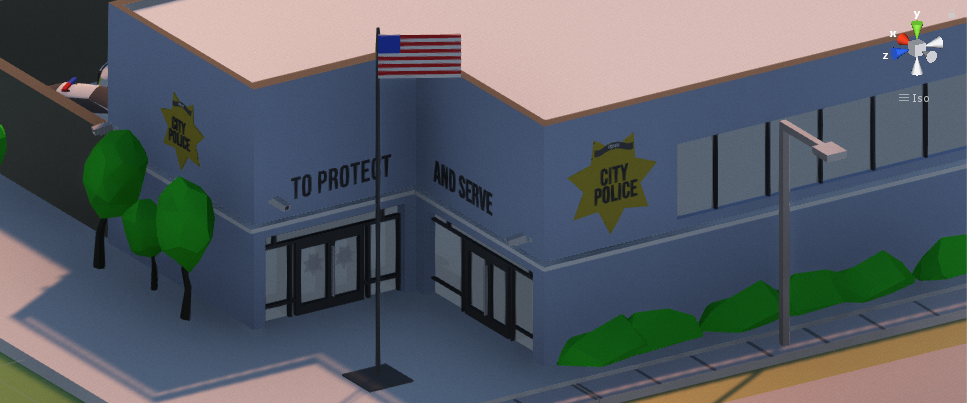
Of course, simply zoning areas of land and waiting for residents and businesses to move in isn't enough to keep a city running. Eventually your citizens are going to start clamoring for utilities, essential services, leisure activities, cultural pursuits, and more. To provide these to your city you will be responsible for strategically placing the service buildings necessary to keep each neighborhood in your city running and your citizens happy.
In addition to this there will be events that occur throughout the early, mid, and late gameplay stages of Metropolisim that will require you to actively make decisions about whether or not to place certain buildings in your city. During these opportunities it will be important to balance the pros and cons of your choice before acting. More on this further down in this diary.
For now, here are some examples of the buildings you'll have the opportunity to place in your city, by category:
Health
Small Clinic, Large Clinic, Small Hospital, Large Hospital, Resarch Hospital, Hospital Offices, Surgery Center
Education
Elementary School, Elementary School (Private(E)), High School, High School (Private), Trade School, Community College, University, Research University
Justice
Regional Justice Center, Local Court, City Court
Utilities - Power
Coal Power Plant, Oil/Gas Power Plant, Power Repeater Facility (Local)
Utilities - Water
Water Tower, Water Pumping Station, Water Treatment Facility
Utilities-Internet
ISP Data Center, ISP Offices, ISP Storage Facility
Utilities-Cellular Phone
Cellular Provider Offices, Cellular Tower, Cellular Repair Facility
Law Enforcement
Police station, Police Command Post, Police Air Unit Station, State Police Barracks
Corrections
Small Jail, City Jail, City Jail Offices
Fire
Fire Station, Central Fire Command, Fire Air Unit Station
Sanitation
Garbage Depot, Recycling Depot, Landfill, Waste Treatment Facility, Fleet Maintenance Facility
Air Travel
Small Airport, Regional Airport, International Airport, Helicopter Airport, Maintenance Facility
Mass Transit
Bus Stop, Small Bus Stop, Large Bus Stop, Transit Depot, Train Station, Large Train Station
Event
Church, House of Worship
This is just a glimpse at a portion of the buildings that will be available at Early Access launch. There are already more in development as well as many more that will be added after the game launches.
Focus Buildings
Focus paths are specialties that a player can choose each time they embark on managing a new city. They are large-scale, long-term pursuits and endeavors that will keep the player occupied from early through late game. Focus paths are completely optional, but add quite a bit of depth and realism to the game.Each focus path contains a number of challenges and unlocks, each of which has multiple pre-requisites that the player must meet before moving onto the next phase.
One example of focus paths is for sports teams. There are focus paths for multiple sports including basketball, baseball, football, and soccer. Taking baseball as an example. The focus path will start out requiring the player to invest in local educational programs through their schools to fund baseball athletics. Next, as the city grows, and there is enough talent within the city, a minor league baseball stadium can be constructed. After which, the player will need to invest in television and radio contracts as well as complete other tasks in an attempt to raise support for the team. Eventually, if the team is supported at a high enough level in the city, and the city has grown to a size worthy of a professional team, the player will be able to construct a major league baseball stadium (if they can afford it.)
Of course this is just one example of focus paths and I have simplified the description for the sake of explanation. There are many more that will be in the final game and they will vary in difficulty to execute.
State & Federal Zones and Buildings
Frequently, as cities grow, next levels of government above the city (state and federal) may require land for use for constructing service buildings for things like government offices, motor vehicle departments, prisons, research facilities, federal or state law enforcement, space exploration, and so forth.
There are two ways the state or federal government can get the needed land within your city. The first is by requesting that you zone an area of land for them to build on. In this case you will be allowed to choose where the building goes. You may even be allowed to decline the construction, depending on the event. For example, the state may request to build a state prison in your city. If allowed it will bring in blue collar jobs, reduce crime overall, generate a bit of revenue, but ultimately lead to unhappiness for any residents residing around the prison.
The second is that the government will choose an appropriate spot within your city and you will receive an event notification that the government will be beginning construction on an area of land within your city.
General
State Office Building, Federal Office Building
[b]
Military[/b]
Military Base, Military Air Wing Base, Military Command Center, Military Prison
Corrections
State Prison, Federal Prison
Law Enforcement
State Police Barracks, Federal Bureau of Investigation Offices
Motor Vehicles
Department of Motor Vehicles
[b]
Research[/b]
Space Research Facility, Rocket Development Laboratory, Rocket Test Site, Space Shuttle Launch Pad, Rocket Launch Pad
Building Variety
I am incredibly passionate about building variety. My goal is to limit building repetition as much as possible. Buildings of the same model will have multiple color palette and lot-position variations to keep the game pleasing to the eye and interesting to look at. No two cities will ever look the same. In addition, there will be urban and suburban variations of many of the larger commercial buildings. Suburban versions will have larger parking lots to support their workforces, while urbans will sprawl vertically on a much smaller lot with less parking, expecting the use of mass transportation to reach these destinations.
Poverty & Homelessness
This is something I have kept under wraps for quite some time but I am incredibly excited to share today. The addition of simulated poverty and homelessness within the city. To my knowledge, something that has not been tackled before in a city builder.
The way it works is, for most other areas of the game the player is able to designate where they want to zone or place buildings, controlling the direction of their city including what goes where. But there is always the potential for things to get out of control. It is up to the player to manage their city adequately or risk poverty taking hold.
When homelessness increases to an unmanageable level the homeless population within the city will begin to take over areas of land that hasn't yet been occupied and construct their own settlements there. You will see tent cities emerge which will lead to crime, public health crises, and unhappy citizens. The longer you fail to act the worse it will become. Eventually it will become very difficult for the city to remove them, and the longer you wait, the more they will lead to unhappiness in the surrounding area for existing residents. More to come on the logistics of city and economy management in future development diaries. Needless to say, you'll want to read those.
Conclusion
Hopefully you enjoyed this update. Hopefully in the next month or so I will be switching gears to provide smaller, but more frequent updates. As usual, if you have any questions please feel free to share and I will do my best to answer.-Roy
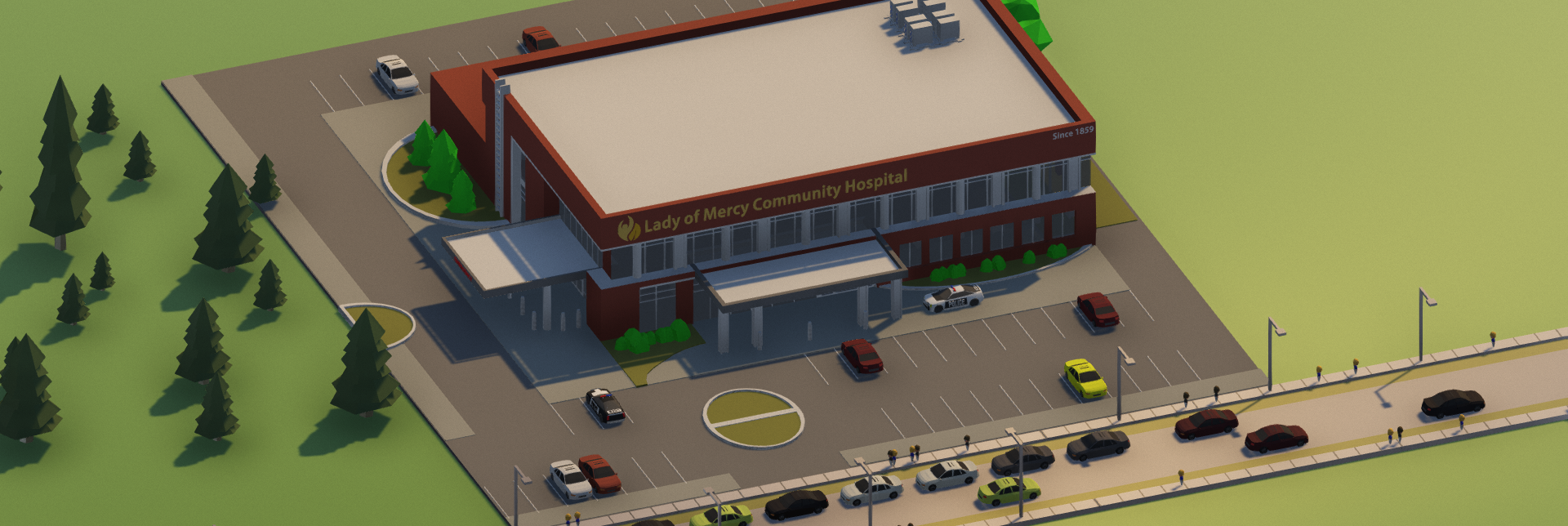
Hello and welcome to Development Diary #3 for Metropolisim. I am really thrilled to be writing this and to be able to share new information about the game with you. I'd like to once again thank you for following and supporting the game. A special thank you to everyone who has Pre-Ordered the game. It is amazing to see the reception the game has already received even in it's early stages. I am eager to show you as much as possible in the coming months as we move towards Early Access release.
Today I am going to be covering a lot of in-depth information surrounding the traffic and pathfinding systems in Metropolisim. For those who have been following my development diaries you will know that initially I planned to have a narrated gameplay video uploaded to YouTube to coincide with this post. However, I just haven't had enough time to make that video. Since I have been seeing a lot of anxious fans awaiting more information on the game I decided to go ahead and post this diary today and continue to work on the video which will be released in the near-future.
The good news is, although I wasn't able to create the narrated video in time for this post, I still have several gameplay videos embedded throughout this diary, including first looks at city traffic in action. Hopefully this is as exciting for you to see as it is for me to share! Without further ado, let's go ahead and jump right into it.
https://youtu.be/1NpYmntkRtk
https://youtu.be/UY7ILHgwPRY
Fast and accurate pathfinding, in my opinion, is one of the core foundational elements of a city building game. Traffic impacts almost every other system in the game and is incredibly important to get right but also incredibly difficult to get right. In order to simulate millions of living citizens with real lives that include families, jobs, and leisure interests each of these citizens need to be able to move around your city from point A to point B in a believable manner and on a schedule that makes sense. Traffic systems are a constant source of feedback for the player as the cars zoom to and from their destinations so getting it right is incredibly important. If paths take too long to create, are not accurate, or traffic behaves in a nonsensical manner it can break immersion and result in poor gameplay.
I have spent a significant amount of time creating the traffic and pathfinding systems for Metropolisim and I am very happy with where these systems are. With that said, the game is still in a pre-alpha state so I am continuing to work on fixing bugs and adding features and functionality. I have lots more planned to add as the game moves into Early Access and beyond.
In this Development Diary I am going to cover some of the points I think the community will be most excited about but keep in mind there is lots more still to share in the future.
#1 - Traffic - Rush Hours

Let's start off with a bang. I've had the question posed to me multiple times - "will there be rush hours in Metropolisim?"
[u]I am happy to say the answer is YES![/u]
Rush hour traffic is a factor in any major real-life city and I am happy to say that rush hour traffic systems will be present at Early Access launch of the game. No mods required.
Dynamic traffic that changes throughout a normal 24-hour cycle was something I knew I wanted to have in the game from the beginning. Since citizens are all fully simulated and are constantly evaluating a set of priorities to make decisions about how they should behave it is a must that their travel cycles change throughout the day.
Each citizen of working age in your city who is able to find a job will need to commute to and from work using one of the many transportation options. These could be from anything to walking, driving, or using public transportation. Each citizen will have a maximum tile distance they are willing to commute to work, so don't expect them to be willing to drive four hours each way to and from work. In addition, each transportation option will have a number of factors that influence the maximum distance a citizen is able to use that option. Citizens will not walk more than 20 tiles each way to work, and they will not walk more than 15 tiles to a bus stop, for example.
Careful city planning will be necessary to lay out your communities in the most efficient way possible to ensure citizens are able to use the most effective methods to reach their place of employment or leisure activities. Minimizing the use of cars will be important as you progress into the later stages of the game and begin to have higher density buildings appear. You'll need to get as many citizens as possible to either walk or use public transportation when moving through the city to reduce traffic congestion and eliminate traffic choke points and traffic jams.
On a typical weekday you will see spikes in traffic as citizens commute to work in the morning, and then again, likely in the opposite direction, as they commute home from work. You will also see increased traffic on the weekends as citizens head off to enjoy leisure pursuits like going out to eat, to the movies, or to the park. And of course, late at night, traffic will wind down as your citizens get nestled into their beds for the evening.
What this means to you is increased usage on roadways at peak times depending on citizen desires, and depending on your city layout and the paths citizens choose to reach their destinations. So expect traffic jams and unhappy citizens if you don't plan your road networks accordingly.
Excited yet?
#2 - Traffic - Actual Destinations, Real Paths
As I alluded to above one of my main goals with the traffic and pathfinding systems is to make the traffic behavior as close to real life as possible. That means full pathfinding and true routes for each citizen in the game. Every citizen and vehicle you see on the screen is moving along an actual path with intent to reach and objective for a purpose. You will not need to investigate charts or look at data overlays in order to understand how traffic is behaving in your city. You can simply look at what is happening on-screen. When you see a car driving on a road you will know that it is a real citizen with a real objective and not simply a randomized vehicle there to make you think there is traffic on the road.But before you ask, I will still be providing lots of data, charts, and overlays for you to dig into as much as you'd like. Combined with the on-screen traffic you will be able to make informed decisions when deciding how to lay out your road networks whether you are getting ready to zone new communities or need to make improvements to alleviate congestion within existing communities.
#3 - Traffic - Full City, Fully Simulated
https://youtu.be/gvN4PQ05o6AAnother way to make the traffic as realistic as possible is to constantly be handling traffic throughout your entire city even when you aren't observing it. In other words, just because you aren't watching a citizen that doesn't mean they've stopped going about their day.
Since every citizen is a simulated agent they'll still go to school, work, or the park while you aren't watching. This means you'll need to continually be evaluating the paths they are taking and which roads they are using to ensure traffic is able to flow as smoothly as possible and citizens are able to reach their destinations in a fast and orderly fashion. No neighborhood is immune to traffic issues, so you'll need to continually review each section of your city.
Too much time stuck in traffic will result in longer commute times and lead to unhappy citizens. Unhappy citizens will negatively impact a lot of things in the game from mayor rating and land value to the quality of businesses looking to move into your city.
[h1][b]
#4 - Traffic - Lane Usage[/b][/h1]
This is another one I'm really excited about. A common complaint from other city building games is vehicles using lanes in ways that don't make sense. In Metropolisim I have spent a significant amount of time developing logic to help your citizens make correct decisions regarding lane usage. It can be incredibly frustrating to watch vehicles all lining up in one lane while there are other options available. Vehicles in Metropolisim follow dynamic paths that understand the best lane to use based on each step in the path.
For road types that have more than one lane traveling in each direction citizens will follow paths that take them into the correct lanes depending on if they are going straight, left, or right at the next intersection. You will not have to deal with all citizens using one lane and creating needless slowdowns or traffic jams regardless of which way they are going. Right now none of the roads in the game have specific turn lanes, but I am still in the process of exploring turn lanes and how to best implement them to even further segment traffic on roads in a more efficient manner. More to come on this.
There are a number of different road types in Metropolisim with different lane compositions. Everything from two-lane streets to four-lane avenues to six-lane highways. You will see behavior that makes sense from your citizens as they move along their paths utilizing these different road types.
#5 - Traffic - Intersection Types & Settings
https://youtu.be/lWo9B7g-YbYYet another exciting feature I think you'll appreciate. In order to manage your traffic more efficiently you will have the ability to change a number of variables for each intersection in your city. These variables range all the way from the actual type of intersection itself down to the timing and pattern of the traffic lights.
When they are constructed each individual intersection type will have a default "type" depending on the expected traffic volume on that road type. Examples of these include:
- 4-Way Intersection with Traffic Lights
- 4-Way Intersection with Stop Signs
- T-Intersection (cross-traffic does not stop)
- T-Intersection with Stop Signs
- etc.
These intersection types can be changed at your discretion to whatever you require to manage your road networks and to ensure the best flow of traffic through your city. Initially a quiet residential street may be best served by a 4-way intersection with stop signs. This will ensure residents don't have to wait too long when there may be very little traffic on the street. As that street grows over-time it may be re-zoned for medium or high-density residential. Once larger buildings begin construction there will be an influx of additional traffic. At that point you may want to change the intersections at each end of the street to be 4-way with traffic lights to better control the flow of traffic on the street.
Additionally, through inspecting the road type and bringing up the intersection panel you will be able to change the timing and pattern of traffic lights. This will be useful if you observe a street that has a significant amount of traffic flowing in one direction but not the other. If you have more traffic going north/south on a street than east/west you can set the traffic light to remain open for north/south traffic for twice the amount of time it remains open for east/west. This increased amount of time for traffic traveling north/south to flow through the intersection will alleviate potential traffic jams.
This is just the tip of the iceberg when it comes to the level of detail that will be present in Metropolisim when it comes to intersection management. Hopefully this gets you thinking about all the exciting possibilities. More to come in the future.
#6 - Traffic - Speed Limits & School Zones
Each road type will have a default maximum speed value at time of construction. These values can be tweaked within a clamped range of values to allow you to directly impact the flow of traffic within the city. However, keep in mind that faster traffic creates more traffic noise which directly impacts the happiness of citizens living on the streets you are modifying. So while you may be decreasing commute times for citizens who commute along those roads it will be important not to attempt to zone medium or higher wealth on high traffic and high-speed-limit streets as these citizens will quickly become unhappy.Another feature I'd like to highlight to show just how in-depth I am going with traffic speed management is the implementation of school zones. Just like in real-life, schools will require cars to slow down as they pass by in order to protect the increased number of child pedestrians who will be present in the area surrounding the school. So plan accordingly. Probably best not to zone a school directly on an Avenue for example, as this slowdown on a main avenue will lead to increased commute times and unhappy citizens.
[h1][b]
#7 - Traffic - Emergency Services[/b][/h1]
Just like in a real city emergency services should take priority over regular vehicles instead of getting stuck behind them. In Metropolisim police cars, fire trucks, and ambulances will cause vehicles in front of them to yield to them by moving to the side of the street allowing the emergency vehicle to pass by unimpeded when possible.
However, this will not be possible on congested roads or roads that are experiencing traffic jams. This is because other vehicles will not have the ability to move out of the way of emergency vehicles due to not having space. Another reason it is important to keep your traffic situation under control. If your emergency vehicles are not able to reach their destinations quickly it can lead to fires spreading, crimes escalating, and citizens dying. This can lead to a cascading amount of negative impacts on your city including everything from citizen unhappiness, to building destruction and abandonment as well as draining your budget.
#8 - Pathfinding - Shortest Path vs. Fastest Path
One of the things I'm most proud of concerningthe pathfinding algorithm in Metropolisim is how it determines which is the best path for citizens to use for each of their routes. One critical aspect of this is the differentiation between "shortest path" and "fastest path". Here is a definition of each:- Shortest path - Least amount of tiles between start point and end point
- Fastest path - Most efficient route based on a number of factors including road types traveled and amount of tiles between start and end point
At first glance you might think that the shortest path is the best path but in the majority of cases it actually is not. An example of this would be traveling along a street vs. a highway. On a highway vehicles are able to travel at a higher rate of speed and with limited or no intersections which cause them unnecessary stops. On a street vehicles travel slower and are forced to stop at each intersection along the way.
Now imagine a scenario where a highway and street are running parallel to each other separated by five tiles and a citizen is attempting to travel 100 tiles from south to north on one of those road types. When the pathfinding logic is evaluating the options and trying to find the best path between either the street or highway it should be intelligent enough to know that highways are a more efficient means of travel. I accomplish this by assigning each road type a weight and performing calculations to return a value cost for each path option. The end result of this is that even if the street is closer to the starting point of the path the pathfinding algorithm will understand that it can simply travel 5 tiles further west and get on a highway to proceed the 100 tiles north that is required for the citizen.
This results in much more believable and realistic pathfinding and traffic patterns as citizens will prefer to use highways, avenues and one-way roads instead of surface streets.
I'm so excited about this.
#9 - Pathfinding - Route Views
https://youtu.be/8qkxyaclzvIFinally, I'd like to talk about route views. In Metropolisim you have the ability to see the route any citizen is on at any time simply be inspecting or querying the citizen as they move through the world. Just two clicks of the mouse will get you into their Citizen Detail panel and then to the 'Show Route' button. This will draw their path on the screen.
This gives you the ability to get detailed information about the citizens who are using your roads, what they are using them for, how long it takes for them to reach their destinations, and how they are contributing to the overall traffic patterns in your city. This tool can be incredibly powerful as a Mayor and it also adds a level of depth and realism that I feel is really fun and exciting.
#10 - Conclusion
If you've made it this far thank you for reading all of this. As I've said numerous times I remain excited about the future of this game and committed to my vision of creating the most deeply complex city building game available for Windows, Mac, and Linux. We are inching slowly closer to Early Access release later this year but I believe me when I say I have many years of content planned for Metropolisim. New content will not end when we enter Early Access or even after 1.0 release.If you haven't already please consider Pre-Ordering Metropolisim.
Thank you again for your support. Signing off for now.
-Roy
Hello all you Metropolisimers? Metropolisimites? Metropolisim-lovers? Hmm..need to work on that. Open to suggestions. :)
First of all - HAPPY NEW YEAR! I hope you all had a fantastic night to ring in 2019. I will be honest, I was at home working hard on the game, but I did get up at midnight and give the family a kiss and take a moment to reflect and be thankful for a great year in 2018.
2018 will be a hard year to beat, but I'll be darned if 2019 isn't going to be amazing too.
2019 is the year Metropolisim will launch into Early Access and you will all get a chance to play it for yourselves. I am still working on an exact date when that will be happening, so more to come on that. But before we get to that point I still have lots more development diaries planned with information to share about the game.
The next development diary will be coming in the next two weeks (mid January or so) so please look forward to that. Dev Diary #3 will be focused on citizen pathfinding, movement, and public transport usage. It will most likely contain a video so you will get to see the game in action.
Right now I am trying to polish a few of the systems that serve up that functionality as well as the UI so I make sure that when I show you guys the game it is up to my standards and the standards you all expect and deserve.
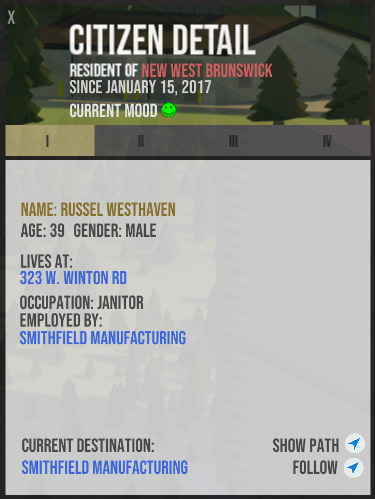
In the meantime, here's a quick look at a work-in-progress version of one of the UI elements. This is the citizen detail panel. It still needs a lot of work but it should give you an idea of the type of things you'll be able to do with the citizens of your city. Things like see where they live, where they work, where they're going, and follow them (if you want to be a little creepy.)
Also, dig into their current mood. On some of the hidden tabs will be more really in-depth and exciting things like their income, details about their family, etc. So excited with how much detail and interaction I'm going to be serving up and putting at your fingertips when it comes to the residents of your cities.
I know a lot of you have been asking questions in the forums and I haven't been able to respond lately. WIth the holiday season and everything going on I haven't had time to do much, and what free time I have I spend working on developing the game. I promise I will be jumping into respond to as many of you as I can in the coming weeks.
Thanks again for following the development of Metropolisim and I look forward to sharing more with you soon.
Wishing you the best in the coming year.
-Roy

Hello and welcome to Metropolisim Development Diary #2. It's been over a month since I posted the first development diary for the game. A lot has happened in the past six weeks. I have been working at a feverish pace developing new functionality for the game, testing and fixing bugs, and interacting with the awesome community that has started to form around the game.
First and foremost I want to address that our Steam community has grown exponentially and I want to say "welcome" and "thank you" to everyone who wishlisted and is following the game in our community. It really is amazing to get to interact with you all and I've answered several really great questions so far. I'm happy to answer more so keep them coming.
Before I get into a recap of what I've been working on for the past month I want to talk a bit about some of the fundamentals of Metropolisim. I haven't been shy about discussing the fact that I am a huge fan of city building games. I want Metropolisim to be, in as many good ways as possible, a spiritual successor to all of the great city games that have come before, most notably Sim City 4. For those of you who have played and are fans of that game I'm sure this is great to hear, but I know there are a lot of people who haven't played it, so I want to be transparent about what you can expect from Metropolisim.
The number one thing you can expect is to go deeper than ever before in terms of city simulation and management. I would argue that Sim City 4 has taken us, the city building gamer community, about as deep as any game has. But even that wasn't nearly enough for me. What it did do was encourage me to make the game I and others desperately want to play. To put it in perspective, that game did about 30% of what I want to do and plan to do. I want to give the player so many "levers to pull" to manage their city and be an active decision-making participant that it is almost overwhelming. Almost. This game is going to take time to learn, it's going to be challenging, but most importantly it's going to be fun and rewarding.
I want to re-capture the feeling we all got when we played our first city builder and started to see our city make the transition from small town to metropolis. I want you to feel like what you're doing matters, and you're not just a bystander who painted a couple zone colors on a map and then watched buildings appear. That is my goal.
Before we can get to all that I need to expand on some of the basic concepts of the game. I need to outline some of the core gameplay elements in Metropolisim. I plan to do this over the course of the next several development diaries, and today I will focus on Road Placement and Zone Types. Please keep in mind, as Metropolisim is in pre-alpha stage, the below is subject to change and will most likely improve/grow in the coming months. But this is what I've got working or planned so far.
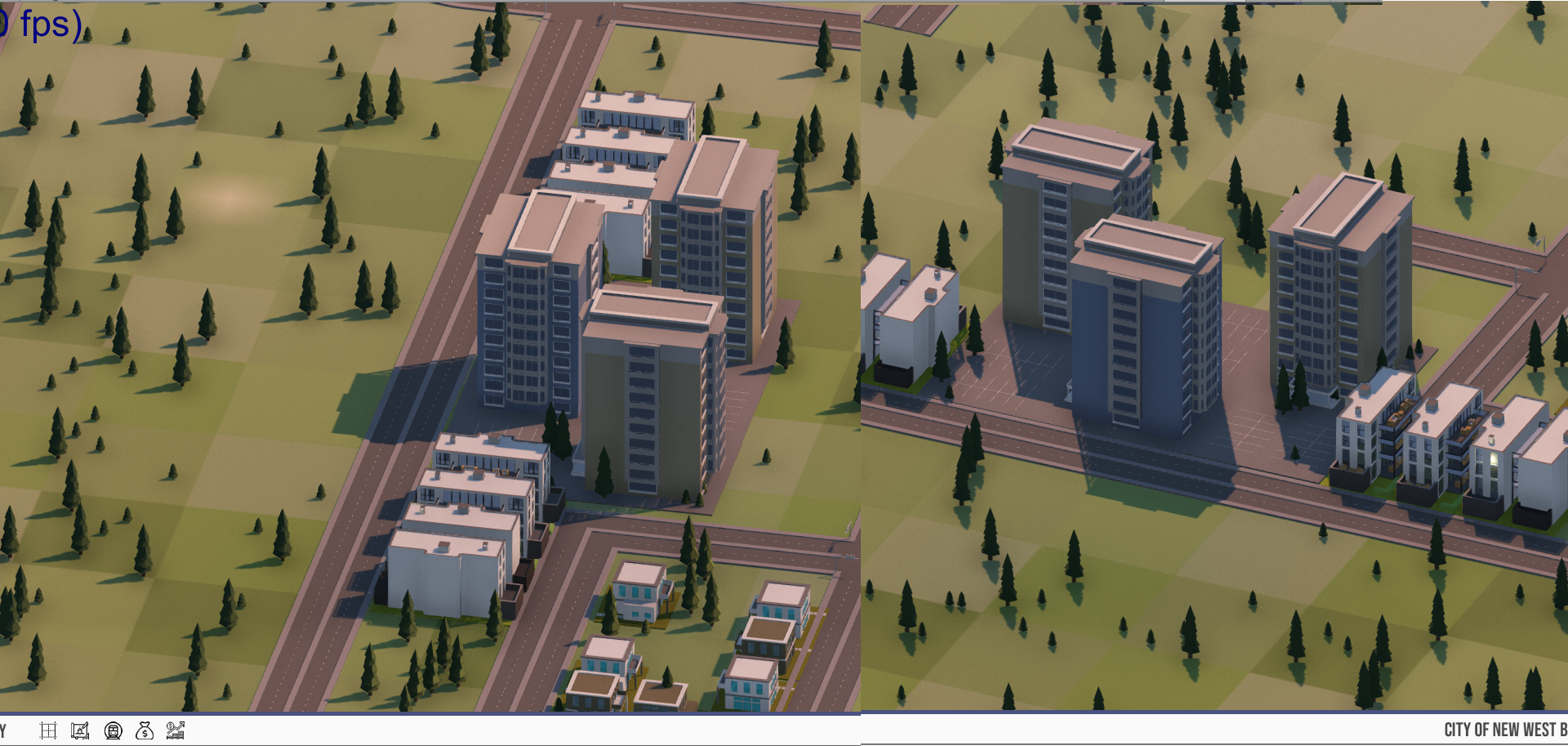
Road Placement
In a city building game, my opinion is roads are the backbone of the gameplay in that many different systems within the game are dependent on them. Things like knowing which way buildings should face when they grow or are built, pathfinding, and so on. From a development perspective I believe it is important to tackle the core of the road system as the first thing or one the very first things that gets done. I'm happy to report that is the case with Metropolisim. The roads and pathfinding are 90% programmed. I will still be adding new road types (think two lane avenues vs. three lane avenues) but the mechanics of the roads are done.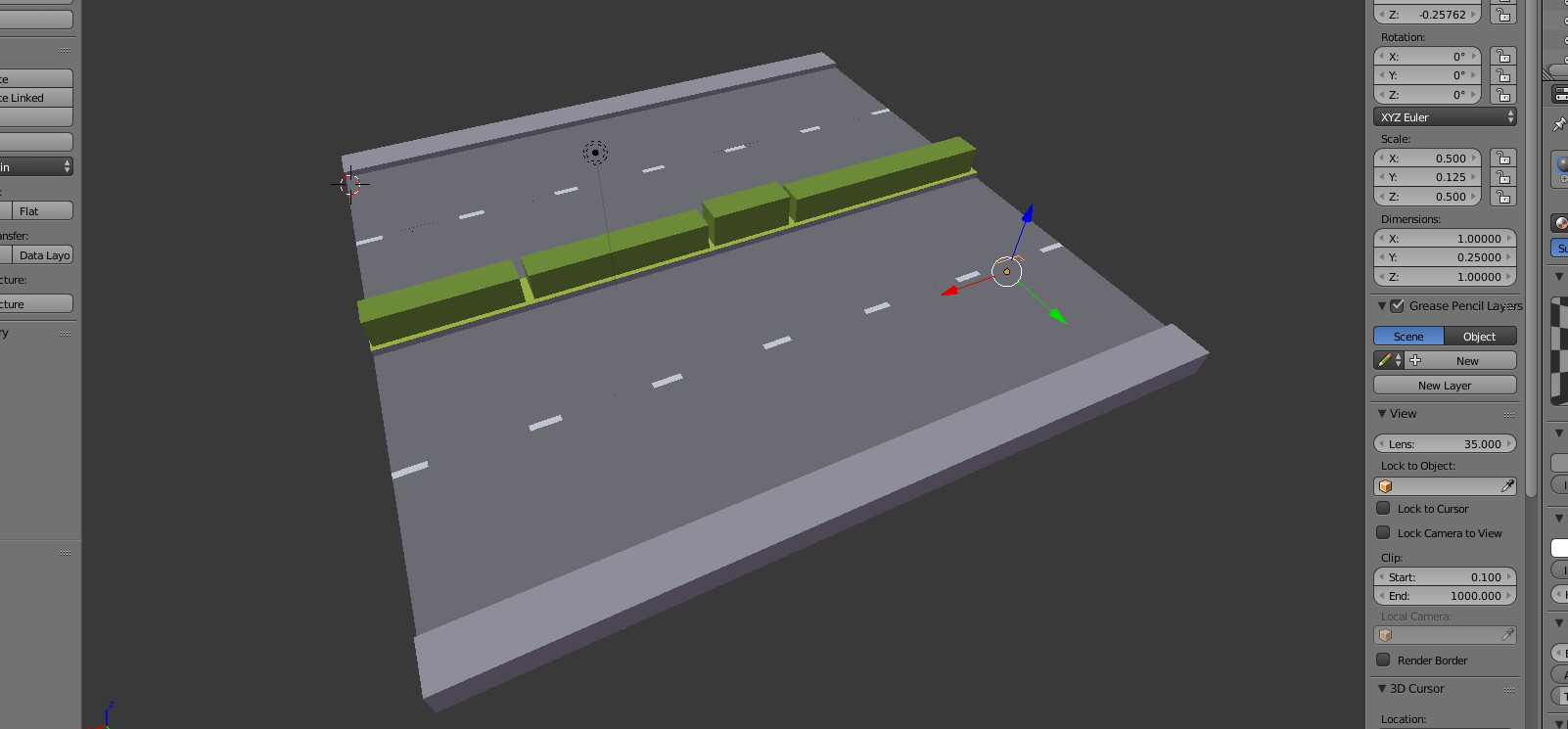
Here are the road types that are existing or planned:
Street
One-Way Street
Road
One-Way Road
Avenue (2 Lane)
Avenue (3 Lane)
Split Avenue (One-Way)
Highway (4 Lane)
Highway (6 Lane)
Multiple overpass and interchange types
More to be revealed at a later date
As you can see there will be lots of different options from not only a gameplay perspective, but also in how you lay out your city from a design regard, and to make it have a nice appearance.I am really excited about this!
Zone Types
Zoning in a city builder is another critical element that is fundamental and essential to good gameplay. I am deeply focused on incorporating a lot of variety in the zone types to keep things fun and challenging for you, the player. I believe in giving the player as many options as possible and letting you decide how they want to use it all. In other city builders there are only 1-4 zone types to choose from, but in Metropolisim there will be over 15.Here is a list of currently planned zone types:
Residential - Low Density
Residential - Medium Density
Residential - High Density
Commercial Office - Low Density
Commercial Office - High Density
Commercial Service
Mixed Use - Residential/Commercial
Industrial - Factory
Industrial - Manufacturing
Industrial - Technology
Special & Reward - I will be dedicating an entire future development diary to this, as it is something really unique, special and exciting that I want to make sure I give a lot of information on
As you can see there will be countless options in terms of how you zone the land in your city and how you balance the needs of your citizens against the fundamental financial well-being of your city. Metropolisim, of course, will feature things like a demand level and an approval level. You'll need to be very careful about how and where you zone certain zone types to ensure they meet the needs of your city.
Things like not placing high-polluters next to residential is a given, but also you'll need to make sure that jobs are not too far away from citizen's homes or public transportation stops if you want to make sure your citizens are employed and stay employed. Lots more to talk about related to this. Stay tuned.
In the next development diary I'll talk about more of the core city-builder elements featured in Metropolisim. But for now I'd like to move on to some of the other things I've been working on in the past month.
User Interface

The UI is coming along nicely. Up until about two weeks ago I was working with a "development only" UI that was definitely not easy on the eyes. I have started transitioning to moving a lot of the UI functionality that is already programmed over to a pre-alpha version which gets it laid out on the screen where I want and is starting to use some nicer looking placeholder graphical elements. The main focus for me with UI design is to make it as easy as possible for the player to navigate and get to the information they need as easily as possible so they can make decisions about their city and execute on them quickly.
Map
I spent a lot of time in the past 10 days working on ensuring the maps are large enough to hold cities that have millions of citizens. My initial test maps were 400x400 tiles which is 160,000 in-game tiles to build on. This is larger than an entire Sim City 4 region, but still not large enough for me. I reprogrammed some of the map tools and I am currently experimenting with maps 1600x1600 which comes out to 2,560,000 in-game tiles. This is HUGE in comparison to other games. So far it has not had a negative impact on game performance, but I will continue to monitor and adjust as needed. The player will be able to choose the map size they play on, but it's too early to lock-down the maximum final size. Bottom line, the game is going to be huge, the cities are going to be huge. Even the smallest map I've been working with is larger than an entire Sim City 4 region!Mod Support
I've had lot of questions about Mod support in Metropolisim so I want to take an opportunity to address them all now. As I discussed in the last development diary there absolutely are plans to support Mods through the Steam Workshop. Among the modding possibilities planned as of today are the ability to bring new buildings into the game, as well as new maps. The addition of new buildings will be supported by a separate stand-alone application that will ship with the game giving modders the ability to define certain things about the building prior to uploading to the Steam Workshop, or for players to do if they create their own buildings. An example of some of the building characteristics that need to be set include type of building (residential, commercial, etc.), maximum occupancy (residential), job capacity (commercial), etc. I envision the Steam Workshop thriving with new buildings that can be brought into the game similar to Cities Skylines workshop. More to come on this. I am working towards the goal of having mod tools ready for Early Access release, but unfortunately I can't guarantee everything will be ready in time. I am fully committed to adding a significant amount of new functionality, mod support, and gameplay elements as we move through Early Access and beyond.That's all I've got for this month's update. Thank you again to everyone who has wishlisted the game and is participating in our Steam community. If you haven't done either of those things I encourage you to. I look forward to sharing lots more about Metropolisim with you in the coming months.
-Roy
[ 6376 ]
[ 5865 ]
[ 751 ]
[ 2194 ]



